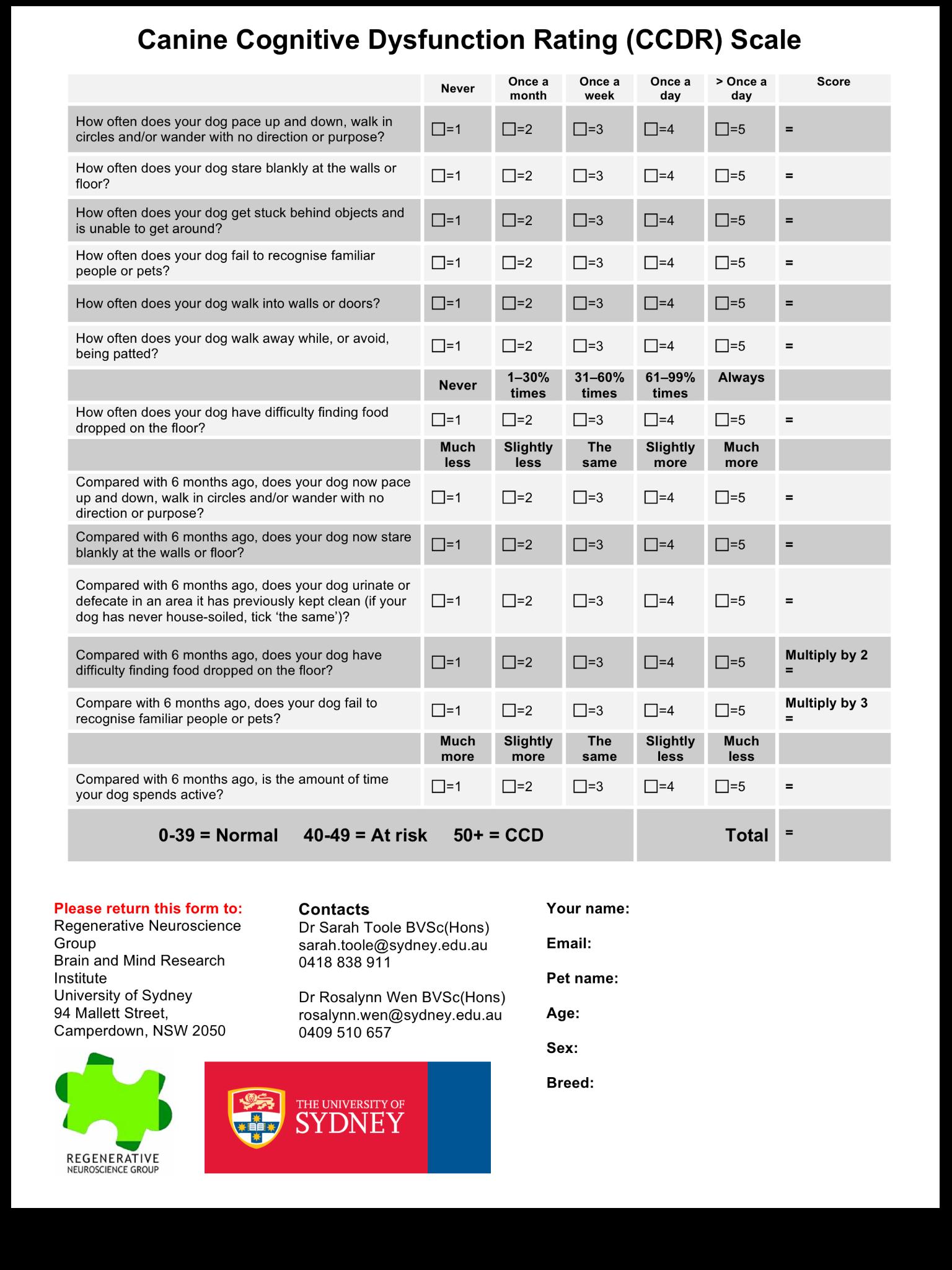Owners often get frustrated with behavior changes like house-training issues, sleep disturbances, barking, separation anxiety and excessive drooling and licking. However, other signs of CCD also include disorientation, confusion, staring, wandering, getting stuck in corners, and difficulties with spatial orientation and recognizing familiar faces.
The prevalence of CCD is highly under diagnosed. In one large epidemiological cross-sectional study of older dogs, the prevalence rate of CCD was estimated to be 14.2%, in contrast with only 1.9% diagnosed with CCD by a veterinarian. One study found that 22.5% of dog’s age 9 or older have CCD, with females and neutered pets been affected significantly more often. Although weight was not a statistically significant predictor variable, smaller animals had greater odds of showing age-related cognitive impairment. The good news is that researchers have found no correlation with CCD and survival rates when they looked at dogs age 8 and older.
With that in mind, a group of researchers developed the Canine Cognitive Dysfunction Rating Scale (CCDR). This is a great tool for pet owners to understand better the signs and symptoms of CCD, and for tracking down any changes over time.
What can you do to help your pets? Just like Alzheimer’s in humans, keeping their brain stimulated and keeping them physically active is an essential component.
Regular exercise and play time routines can be very helpful if your pet doesn’t suffer of other conditions that might prevent them from safely doing so. If you have a walking path that you always take, maybe try to vary your route to introduce other places and smells for your pet to explore. Dog parks and playdates can also be helpful, as long as the park is not too crowded and you are monitoring for safety.
You can also use a variety of enrichment toys to help stimulate their brain. You can even do so during feeding time to encourage mental stimulation with a feeding puzzle. It is important to choose toys that are appropriate for your pet that do not include difficult problem solving or complex motor skills. Some food toys, especially those designed for puppies, are perfect. There is evidence that enrichment can help delay the progress of dog dementia. Check out our products page for some ideas of toys that you could use.
Unfortunately there is no magic cure for age-related dog dementia, but a number of supplements and medications that appear to help it. Keep in mind that you NEED to consult with your veterinarian BEFORE starting any supplements for your pup (I cannot emphasize that enough). But some products that you can possibly discuss with your vet include: Melatonin, Omega 3 fatty acids (such as fish oil), CBD oil, different herbs and essential oils. There are also some prescription medications that has shown very good results that your veterinarian can discuss with you as well. Your veterinarian will be able to better discuss these options with you.
If you have access to a veterinary behaviorist, then I would also suggest a consult with them, especially if you are looking for a more comprehensive approach. These specialists can often help owners dramatically re-orient their confused and stressed-out geriatric pets.
General tips:
- Schedule: Adhering to a set schedule when it comes to feeding, walking, turning lights on and off, and bedtime can be excellent therapy for confused pets
- Early symptoms: The early signs of canine cognitive dysfunction can be subtle and difficult to detect, but early recognition and management is always helpful
- House Safety: Make sure there are no spaces your dog might get trapped in. Remove things they may stumble over, slots they can’t back out of, and places where they might put their head through.
- Handling: you might need to more frequently assist your dog. They could start having some increased difficulty with day-to-day activities such as stairs, jumping into/out of the car, getting up on furniture, etc. There are a variety of devices that you can use to assist your dog with those activities. Be sure to discuss those with your vet or canine rehab professional.
- Toileting: your pup might start showing signs of incontinence. Also be sure to discuss with your vet different options of products that can be useful in those circumstances.
